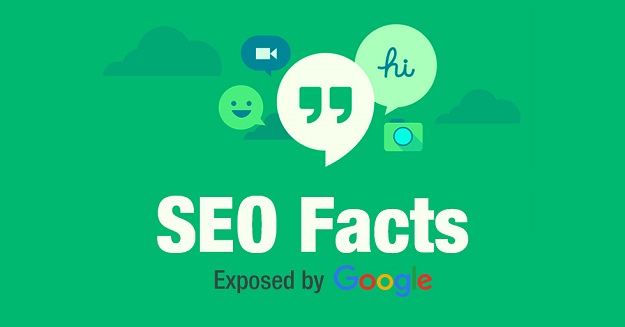If you have a fashion website, you probably already know the importance of having a strong online presence. But is your website optimized for search engines? If not, you could be missing out on valuable traffic and potential customers. In this article, we’ll explore why SEO (Search Engine Optimization) is critical for the success of your fashion website.
In today’s digital age, consumers rely heavily on search engines like Google to find the products and services they need. When someone searches for “fashion trends” or “stylish outfits or fancy dresses,” you want your website to appear on the first page of search results. That’s where SEO comes in. By implementing effective SEO strategies, you can improve your website’s rankings and visibility on search engines. This means more people will discover your fashion brand and products, leading to increased website traffic and ultimately, more sales.
The fashion industry is highly competitive, both online and offline. With so many brands vying for attention, it’s crucial to have a strong online presence to stand out from the crowd. SEO can be the key to achieving this. By optimizing your website for search engines, you can increase your brand’s visibility, attract more qualified leads, and ultimately, drive more sales. Whether you’re selling high-end designer clothing, affordable fast fashion, or niche accessories, SEO should be a critical component of your digital marketing strategy.
Understanding the Basics of SEO

Before we dive into the specific SEO strategies for fashion websites, it’s important to understand the basics of SEO. SEO is the process of optimizing your website to improve its visibility and ranking on search engine results pages (SERPs). This involves a range of techniques, from keyword research and on-page optimization to link building and content creation.
At its core, SEO is about understanding how search engines work and what they’re looking for when they crawl and index websites. Search engines use complex algorithms to determine which websites are the most relevant and valuable for a given search query. By aligning your website with these algorithms, you can improve your chances of appearing higher in the search results, ultimately driving more traffic and potential customers to your fashion business.
It’s important to note that SEO is an ongoing process, not a one-time fix. Search engine algorithms are constantly evolving, and what works today may not work tomorrow. As a fashion brand, you’ll need to stay up-to-date with the latest SEO trends and best practices to ensure your website remains competitive in the long run. By investing in SEO, you’re not just optimizing your website for today’s search results, but also building a strong foundation for future success.
Keyword Research for Fashion Websites
One of the most crucial aspects of SEO for fashion websites is keyword research. Identifying the right keywords and phrases that your target audience is using to search for fashion-related products and services is essential for optimizing your website’s content and improving its visibility on search engines.
When it comes to fashion, there are a wide range of keywords to consider, from broad terms like “women’s clothing” and “men’s fashion” to more specific ones like “sustainable denim jeans” and “luxury handbags.” By conducting thorough keyword research, you can uncover the most relevant and high-performing keywords for your fashion business, and then incorporate them into your website’s content, Meta tags, and other optimization elements.
It’s important to not only focus on popular, high-volume keywords but also long-tail keywords, which are more specific and often less competitive. These long-tail keywords can be particularly valuable for fashion websites, as they tend to attract more qualified leads who are further along in the buying process. For example, a user searching for “black leather ankle boots” is likely closer to making a purchase than someone searching for the more general term “women’s shoes.”
By optimizing your website for the right keywords, you can improve your search engine rankings, increase your visibility to potential customers, and ultimately, drive more traffic and sales to your fashion business. Remember, keyword research is an ongoing process, and you should regularly review and update your keyword strategy to stay ahead of the competition.
On-page Optimization for Fashion Websites
Once you’ve identified the most relevant keywords for your fashion website, the next step is to optimize your website’s on-page elements to ensure they’re aligned with these keywords and search engine best practices. On-page optimization is a crucial aspect of SEO, as it directly impacts how search engines perceive and rank your website.
One of the most important on-page optimization elements for fashion websites is the content. Your website’s content should be well-written, informative, and relevant to your target audience. This means incorporating your target keywords into the content in a natural and seamless way, without stuffing or overusing them. Additionally, your content should be engaging, visually appealing, and structured in a way that makes it easy for users to navigate and consume.
Another key on-page optimization element is your website’s structure and navigation. Search engines prefer websites that are easy to crawl and navigate, with a clear hierarchy and logical flow. This means ensuring your website’s URL structure, internal linking, and site architecture are all optimized to enhance the user experience and make it easier for search engines to understand the context and relevance of your content.
Other important on-page optimization elements for fashion websites include: – Title tags and Meta descriptions – Image optimization (file names, alt text, and captions) – Responsive and mobile-friendly design – Fast page loading speeds – Schema markup and structured data – Optimized product pages and category pages
By focusing on these on-page optimization elements, you can improve your website’s visibility and rankings on search engines, ultimately driving more traffic and potential customers to your fashion business.
Off-page Optimization for Fashion Websites
While on-page optimization is essential for improving your fashion website’s search engine rankings, off-page optimization is also crucial for long-term success. Off-page optimization refers to the activities and factors outside of your website that can influence its search engine visibility and authority.
One of the most important off-page optimization strategies for fashion websites is link building. Building high-quality, relevant backlinks from other reputable websites can significantly boost your website’s domain authority and search engine rankings. This could involve guest posting on industry blogs, collaborating with influencers and other fashion brands, or leveraging your existing partnerships and relationships to secure valuable backlinks.
Another key off-page optimization strategy for fashion websites is social media engagement. By actively participating in relevant fashion-related social media communities, sharing your content, and engaging with your audience, you can not only drive more traffic to your website but also improve your brand’s overall online presence and authority. This can have a positive impact on your search engine rankings, as search engines often consider social signals as a ranking factor.
Additionally, you can explore other off-page optimization tactics such as: – Local SEO and citations (for brick-and-mortar fashion stores) – Influencer marketing and brand collaborations – Online directory listings and citations – Video marketing and optimization – Earned media and PR coverage.
By focusing on a comprehensive off-page optimization strategy, you can complement your on-page efforts and create a well-rounded SEO approach for your fashion website. This can help you build a strong, authoritative online presence and improve your visibility in the highly competitive fashion industry.
Creating High-quality Content for Fashion Websites

Content is the backbone of any successful fashion website, and it plays a crucial role in your SEO strategy. High-quality, informative, and engaging content not only helps to attract and retain your target audience but also signals to search engines that your website is a valuable and trustworthy source of information.
When it comes to fashion websites, there are a variety of content types you can create to enhance your SEO efforts. This could include blog posts on the latest fashion trends, product descriptions that highlight the unique features and benefits of your clothing and accessories, or even educational guides on style and wardrobe essentials.
Regardless of the content format, it’s important to ensure that your content is well-researched, well-written, and optimized for search engines. This means incorporating your target keywords in a natural and seamless way, using relevant headings and subheadings, and including high-quality visuals and multimedia to enhance the user experience.
Additionally, you should consider creating content that addresses the pain points and questions of your target audience. For example, you could write a blog post on “How to Choose the Perfect Jeans for Your Body Type” or “5 Wardrobe Essentials Every Woman Should Own.” By providing valuable, problem-solving content, you can not only improve your search engine rankings but also build trust and credibility with your audience.
Remember, content creation is an ongoing process, and you should continuously monitor your website’s performance, analyze user behavior, and update your content strategy accordingly. This will help you stay ahead of the competition and ensure that your fashion website remains a go-to resource for your target audience.
The Role of Website Design in SEO for Fashion Websites

While content is undoubtedly a critical component of your fashion website’s SEO strategy, the design and user experience of your website also play a significant role in its search engine visibility and performance.
A well-designed, visually appealing website not only attracts and engages your target audience but also signals to search engines that your website is trustworthy, authoritative, and user-friendly. This can have a positive impact on your search engine rankings, as search algorithms place a high value on factors such as page speed, mobile responsiveness, and overall user experience.
When it comes to fashion websites, the design should be clean, modern, and visually stunning, reflecting the aesthetic and brand identity of your fashion business. This means using high-quality, visually-appealing imagery, implementing a responsive and mobile-friendly layout, and ensuring that your website’s navigation and user flow are intuitive and easy to use.
Additionally, the technical aspects of your website’s design, such as its server response times, image optimization, and code structure, can also have a significant impact on your SEO performance. Search engines prioritize websites that load quickly and provide a seamless user experience, so it’s crucial to optimize these technical elements to ensure your fashion website is performing at its best.
By investing in a well-designed, user-friendly website that is optimized for search engines, you can not only improve your website’s visibility and rankings but also create a positive and memorable experience for your target audience, ultimately driving more traffic, engagement, and sales to your fashion business.
Mobile Optimization for Fashion Websites
In today’s digital landscape, mobile optimization is a critical component of any successful SEO strategy, and fashion websites are no exception. With more and more consumers accessing the internet and shopping for fashion products on their smartphones and tablets, it’s essential that your website is optimized for mobile devices to ensure a seamless and engaging user experience.
Google’s search algorithm now prioritizes mobile-friendly websites in its search rankings, meaning that if your fashion website is not optimized for mobile, you could be missing out on valuable traffic and potential customers. This includes factors such as responsive design, fast page loading speeds, and mobile-friendly content and navigation.
When it comes to fashion websites, mobile optimization is particularly important, as consumers often use their mobile devices to browse and research fashion products on the go. They may be looking for inspiration, checking out the latest trends, or even making purchases while commuting or waiting in line. If your website is not optimized for these mobile users, you risk losing them to your competitors who have invested in a mobile-friendly online presence.
To ensure your fashion website is optimized for mobile, you should consider factors such as: – Responsive design and layout – Streamlined navigation and user flow – Optimized images and multimedia – Mobile-friendly content and calls-to-action – Seamless checkout and payment processes
By prioritizing mobile optimization, you can not only improve your search engine rankings but also provide a superior user experience for your fashion-conscious audience, ultimately driving more traffic, engagement, and sales to your business.
Tracking and Analyzing SEO Performance for Fashion Websites
Effective SEO for fashion websites is an ongoing process, and it’s essential to continuously track and analyze your website’s performance to ensure your strategies are delivering the desired results. By monitoring your SEO metrics and making data-driven decisions, you can fine-tune your approach and stay ahead of the competition in the ever-evolving fashion industry.
One of the most important SEO metrics to track for fashion websites is organic search traffic. This refers to the number of visitors that come to your website through unpaid, or “organic,” search engine results. By monitoring your organic search traffic, you can gain valuable insights into which keywords and content are resonating with your target audience and driving the most qualified leads to your website.
In addition to organic search traffic, you should also track other key SEO metrics such as: – Keyword rankings – Click-through rates (CTR) – Bounce rates – Time on page – Conversion rates – Backlink profile and domain authority
By analyzing these metrics, you can identify areas of your website that are performing well and areas that need improvement. This could involve fine-tuning your content strategy, adjusting your keyword targeting, or optimizing your website’s technical elements to enhance its search engine visibility and performance.
It’s also important to regularly review your SEO competitors in the fashion industry and benchmark your performance against theirs. This can help you identify new opportunities, stay ahead of industry trends, and continuously refine your SEO strategy to maintain a competitive edge.
Remember, SEO is an ongoing process, and it’s essential to continuously monitor, analyze, and adapt your strategies to ensure the long-term success of your fashion website. By staying on top of your SEO performance and making data-driven decisions, you can maximize the visibility and impact of your fashion brand in the digital landscape.
Conclusion
In today’s digital age, having a strong online presence is crucial for the success of any fashion business. And at the heart of this online presence is SEO, or Search Engine Optimization. By implementing effective SEO strategies, fashion websites can improve their visibility, attract more qualified leads, and ultimately, drive more sales and revenue.
From keyword research and on-page optimization to off-page strategies and content creation, SEO encompasses a range of techniques that can significantly benefit your fashion website. By understanding the basics of SEO and staying up-to-date with the latest trends and best practices, you can ensure your fashion brand stands out in the highly competitive online market.
Remember, SEO is an ongoing process, and it’s essential to continuously monitor, analyze, and adapt your strategies to ensure the long-term success of your fashion website. By investing in SEO and making it a critical component of your digital marketing strategy, you can unlock the full potential of your fashion business and reach new heights of success in the ever-evolving world of online retail.

